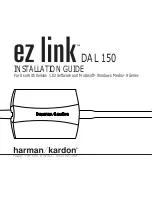
In stal la tion
Sensor location Considerations
(
continued
)
Sensors used in these areas usually require
more frequent calibration checks than normal,
and typically have a shorter life. In many
such applications the normal two year
warranty would not apply.
IMPORTANT:
Each H
2
S sensor is shipped with a red plastic
cap fitted over the sensor head. Inside the cap
is a desiccant. DO NOT remove this cap until
you are ready to power the system. SAVE the
cap and RE-CAP the sensor anytime the
system power is off for more than an hour.
CAUTION
:
General Monitors discourages the painting of
sensor assemblies. If the sensor head is
painted over, the gas will not be able to
diffuse into the sensor. If the assembly cover
is painted over, the digital display cannot be
read.
3.3
In stal la tion In struc tions
Once correctly installed, the Model S214
requires little or no maintenance other than
periodic calibration checks to ensure system
integrity. General Monitors recommends that
a schedule be established and adhered.
General Monitors recommends that the
complete system, including all alarm
circuitry, be tested at least annually.
The overall and mounting dimensions for the
Model S214 (figures 6 & 18) should be used
when making installation determinations. A
complete list of the mechanical specifications
can be found in the Appendix (section 5.1.2).
See pages 19 and 20 for dimensions and
outline drawing.
To prevent possible corrosion due to moisture
or water condensation entering the Model
S214 through the conduit, it is
recommended that the conduit be sealed
or contain a drain loop near the conduit
entry of the housing (figure 7). Each
conduit run from a hazardous location to
a non-hazardous location should be
sealed so that gases, vapors, and/or
flames can not pass beyond the seal.
The purpose of seals in a Class I
hazardous location is to prevent the
passage of gases, vapors, or flames from
one electrical installation to another
through the conduit system. However, it
is not necessary to seal the Model S214
housing in order to maintain its
explosion proof integrity. Specific
information on Class I location seals and
drainage can be found in the National
Electric Code handbook, Article 501-5.
6
GENERAL MONITORS
Model S214
figure 6











































